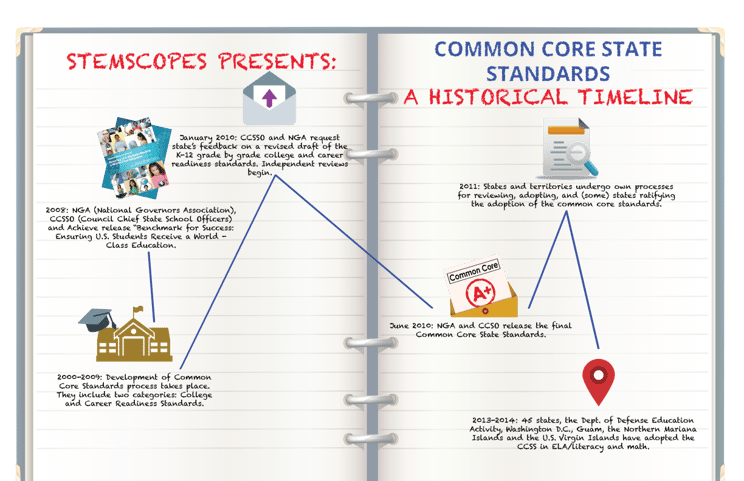Marissa Alonzo | Published October 27, 2015

When becoming a new teacher, you can become overwhelmed. From back - to - school events, parent conferences, to writing new curriculum and making sure you have your assignments made beforehand to lessen the ever stifling feeling you may not make it to winter break, the work of a teacher is never ending. On top of everything you must do, there are things that you must know in this new digital technology landscape. One of these, most importantly, are the current educational standards for your state. Let's take a brief look at the Common Core State Standards (CCSS) and how it has evolved throughout the years and how it effects STEM. Educational guidelines have been around since the 1990s. By the early millennium, almost every state had developed and adopted its own learning standards that specified what students in grades 3-8 and high school should be able to do. Even though states had the common goal of getting their students ready for college, there remained a lack of standardization throughout the United States.
Enter the National Governors Association (NGA) and the Council of Chief State School Officers (CCSSO), the two leading organizations that gathered, researched, and developed the Common Core standards from the request of state leaders, governors, and state commissioners of education from 48 states, two territories, and the District of Columbia.
In 2008, NGA, CCSSO, and Achieve released a report recommending that states "upgrade state standards by adopting a common core of internationally benchmarked standards in math and language arts for grades K-12 to ensure that students are equipped with the necessary knowledge and skills to be globally competitive." This report, entitled Benchmark for Success: Ensuring Students Receive a World-Class Education, strove to convince educators of the need for a streamlined approach to classroom college readiness.
This was not the beginning of the process, however, CCSS had been attracting interest for several years, and between 2008 and 2009 development took place within two categories: College and Career Readiness Standards (addressing what students are expected to know and understand by the time they graduate from high school) and K-12 standards (expectations for students from elementary through high school).
By the beginning of 2010, the CCSSO and NGA again requested states’ feedback on a draft of the K-12 college and career readiness standards: the independent review process began. This lasted until June of 2010, when NGA and CCSSO released the final Common Core State Standards. They concurrently released a report from the validation committee that found the standards:
The next step was state-level review and adoption. During 2011, states and territories developed their own processes for reviewing, adopting, or ratifying the adoption of the new common core state standards initiative. State board of education members, governors, legislators, a
nd/or chief state officers took part in this process to choose whether or not to replace their existing standards with the common core state standards.
In the end, who adopted these standards? From 2013 to the present, 42 states, the Department of Defense Education Activity, Washington, D.C., Guam, the Northern Mariana Islands, and the U.S. Virgin Islands have adopted the CCSS in ELA/literacy and math.
What is the future of the CCSS? While the Common Core State Standards have largely met the goal of standardization throughout the nation, adoption of the standards is still in the individual states’ hands.
*All information collected from the official CCSS website.For more information on the Common Core State Standards initiative please visit: http://www.corestandards.org.
Looking for a curriculum aligned to your state's standards?
Check out STEMscopes and get a preview now!


At the start of the school year, teachers have the chance to create a math classroom where every student feels valued...

Math manipulatives are a great way to make math more accessible for your students, especially if you know they may...

Storytelling is one of the oldest forms of communication as a way to share experiences, understand others, and...